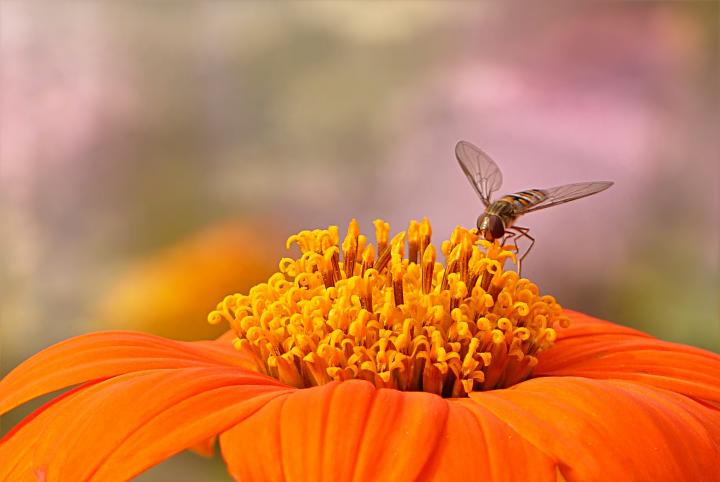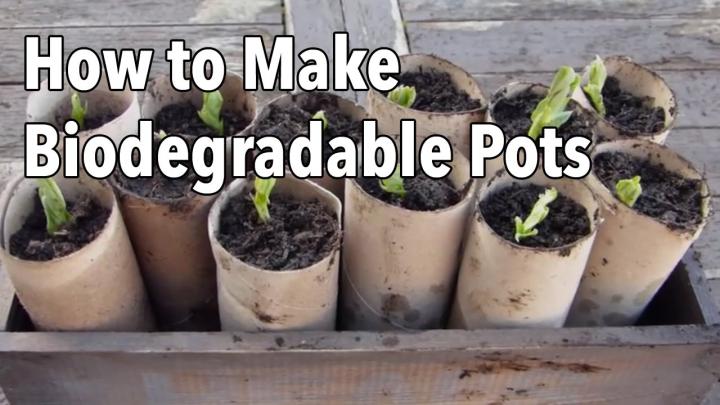WHY CREATE AN ECO-FRIENDLY GARDEN?
The definitely of “eco-friendly” is simply “not harmful to the environment.” Of course, we don’t intend to be harmful, however, how do we garden to protect nature, pollute less, conserve water, reduce our dependence on chemicals, and become more environmentally-friendly? When we work WITH nature, it’s easier on us and on our planet.
You’re probably well aware that the populations of our native bees, butterflies, and other insect pollinators have been declining for several decades. A study from January 2019 indicates 40% of insect species are threatened with extinction. Perhaps you’ve noticed fewer butterflies and bees in your own backyard?
Why does this matter? First, no insects means no food. About one out of every three bites of food you eat is due to those native bees and insect pollinators. About three-fourths of all flowering plants are pollinated by insects, as well as the crops that produce more than one-third of the world’s food supply. Importantly, insects are the bedrock of our entire ecosystem (birds, lizards, frogs, and other wildlife). Without insects, birds and fish and small mammals decline; if they decline, the entire food web is affected.
Thankfully, in the past few years, many programs have shown that we actually CAN make a real difference by creating more eco-friendly gardens and using sustainable practices. Dr. Sverdrup-Thygeson, a professor of conservation biology at the Norwegian University of Life Sciences, states, “We can achieve a great deal with belts of trees and bushes alongside streams in residential areas, green shoulders and hedges along roads, and borders of wildflower meadows along the edges of fields.”
Even a regular homeowner with a small garden can have a powerful impact, namely with: native flowers and trees, pollinator host plants, nesting sites, and a refuge from pesticides.
10 TIPS FOR CREATING AN ECO-FRIENDLY GARDEN
1. CHOOSE NATIVE PLANTS OVER NON-NATIVES
“Native” plants are simply plants that occur naturally in the region where they evolved. Native insects evolved alongside them, as did native birds and wildlife. It’s one big ecosystem!
Exotic, non-native plants can sometimes wipe out native plant and insect species, which may harm the food web. Here’s how we can help prevent that:
- Select native plants for your landscape. See a list of common native North American plants.
- Leave small areas for wildflowers. These weedy plants are perfect for insects. See our video showing how to grow wildflowers to help pollinators!
- Bright flowers such as sunflowers, candytuft, and marigolds create places where ladybugs and lacewings can shelter and lay eggs.
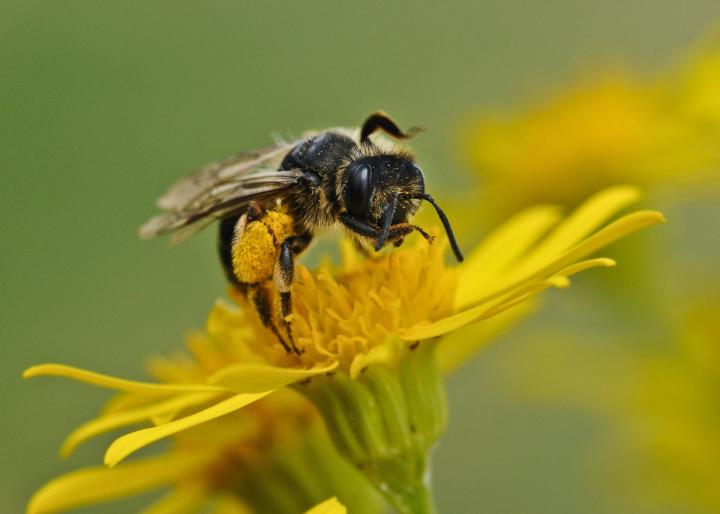
- Consider a mixture of plants with diversified sources of nectar (e.g., shrubs, trees, and flowers—ideally, natives). Shrubs and trees such as dogwood, blueberry, cherry, plum, willow, and poplar provide pollen or nectar, or both, early in spring when food is scarce.
- Look for a variety of plants that bloom in different seasons (spring, summer, and fall) to attract insects across the year.
- Adding native milkweed to your garden provides food for monarch butterfly caterpillars, but don’t forget nectar sources for the adults, such as flowers that bloom in late summer.
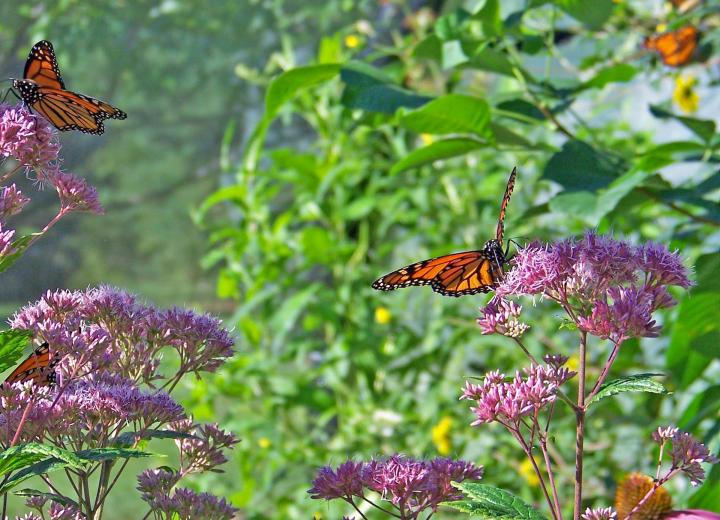
- Consider planting a pollinator strip as a border to a vegetable garden or a wildflower border along the edge of your field. You’ll improve pollination of your crops and also support bees when the crops stop blooming. It will also attract and support other pollinators, such as hoverflies and wasps, that control crop pests.
See our video showing how to plant a pollinator border in your yard or garden!
2. WELCOME BENEFICIAL INSECTS
Many people find insects annoying, but we should really start thinking about the fact that we can’t survive without them (although they certainly survived before our arrival).
Pollinators are critical to our food supply. They keep our flowers blooming; they increase fruit or seed quantity in three-fourths of our food crops.
- European honey bees, while still valuable, are not native to North America and are much less efficient at pollinating our native plants than native bee species. (Native bees may be up to three times more efficient than honey bees!) Read more about native bees, the best pollinators around.
- Native bees, the most important pollinators in most ecosystems, include mason bees, sweat bees, carpenter bees, miner bees, and leafcutter bees, which are all solitary bee species. Instead of living in colonies, like honey bees or bumblebees, solitary bees live on their own in burrows, reeds, or other protected areas. Install a native bee hotel. Learn more about bee houses. Or, drill holes of varying sizes in a dead tree that’s still standing (if beetles haven’t done it for you). Watch our video demonstrating how to build a bee hotel.
Bees aren’t the only pollinators in the garden, though.
- Half of the butterfly species studied are in decline, with one-third threatened with extinction.
- Flies also play important roles! While you may expect butterflies to be the #2 pollinator, flies are actually the ones that hold that title!
- Other insects—such as praying mantises, ladybugs, beetles, and green lacewings—are fantastic at tackling pests. For example, lacewings and ladybugs eat aphids, which can decimate vegetable crops. Do not spray chemicals on your plants—and insects!
► Read “Beneficial Insects in the Garden” and see a list of the good bugs with pictures!
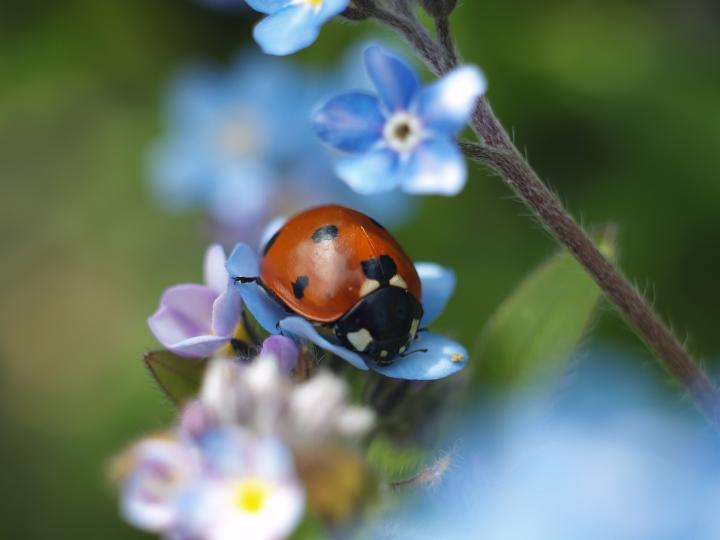
3. GO EASY ON THE CHEMICALS
All gardens have some pests, but deter them in ways that won’t harm the food that you are growing or the beneficial insects!
Instead of spraying with chemicals, consider other options. From diatomaceous earth to neem oil to Bacillus thuringiensis (Bt), there are many less-toxic methods available that really work.
Incorporate plants that attract beneficial insects for pest control. See how to get rid of garden pests naturally.
Remember that chemical fertilizers and pesticides eventually end up in rivers, oceans, and wetlands. Pesticides and herbicides tend to kill many more creatures than the one or two bug species that we target, as annoying as they might be.
4. MIX IN “COMPANION PLANTS”
Are you familiar with the practice of companion planting? Pair up the right plants to naturally repel pests. For example, dill and basil planted among tomatoes can protect from tomato hornworms. When paired together, companion plants improve each other’s health and yields.
Also, mix flowers and vegetables together! You don’t have to choose between growing ornamentals and edibles. Many types of flowers confuse the “bad” pests and help you to grow a healthier garden.
► Learn more about companion planting.
5. ENCOURAGE BIRDS
Birds are pollinators, too!
- Provide clean water for birds (and insects) with a shallow dish, bowl, or birdbath with half-submerged stones for perches.
- Put up bird feeders and nesting boxes. See how to choose a bird feeder.
- Don’t cut down the flowers of plants like sunflowers, coneflowers, and black-eyed Susans in the fall, as their seed heads provide a valuable food source for birds in winter.
► Learn more about creating a bird-friendly backyard.
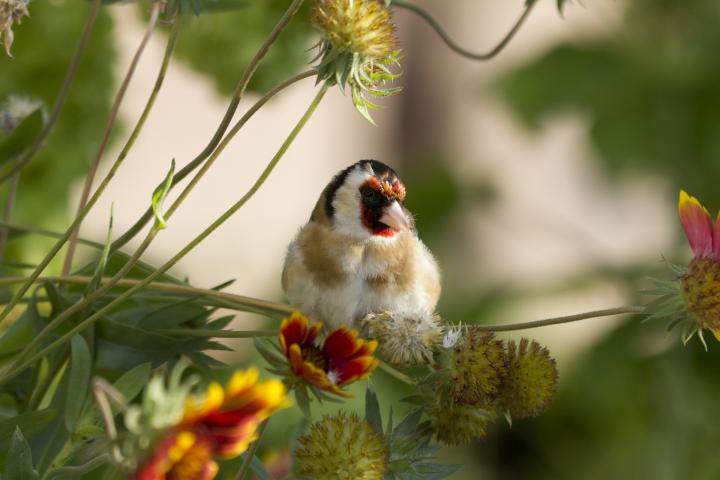
6. BE WATER-WISE
Using water thoughtfully is a very important part of a pollination-friendly landscape.
- As advised above, select your plants with care! If you have a dry area, consider native plants that are more naturally drought-tolerant such as sedum and speedwell (Veronica). If you have a wet area, consider water-tolerant plants (that don’t mind wet feet), such as iris, canna, and ferns.
- Avoiding wasting water. If you must use sprinklers, put them on timers. For gardens, flower beds, trees, and other nonlawn areas, installing a drip irrigation system that puts the water right into the soil, where you want it.
- Harvest your rain water. A rain garden collects rain water from a roof, driveway, or street and allows it to soak into the ground. Rain gardens can also help to filter out pollutants in runoff and provide food and shelter for butterflies, song birds, and other wildlife. See a “sun” and a “shade” rain garden plot plan.
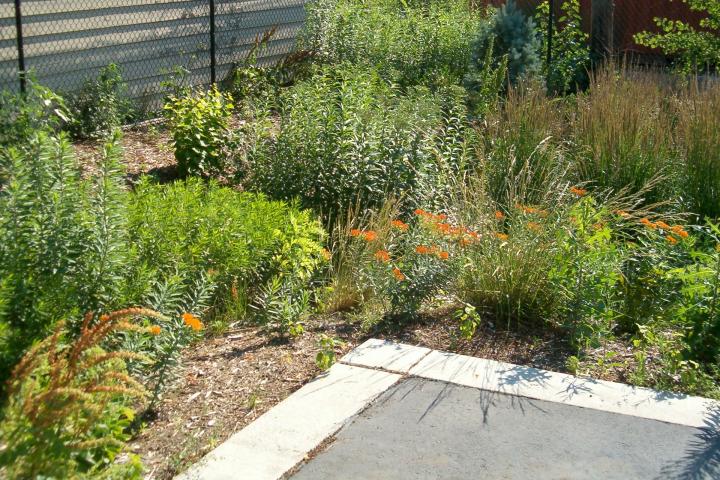
- Alternatively, install a rain barrel to catch water and use it on your plants. See our post about rain barrels.
- Organic mulches such as compost slow water down, so that more moisture goes into the soil instead of running off. That said, leave a little bare ground so that the solitary bees and pollinators have places to nest. Read more about the “Benefits of Mulch.”
- Finally, consider reducing the size of the all-grass lawn. Perhaps you could stop mowing one section and convert it to a native wildflower border or meadow?
7. TRY COMPOSTING
Do you have spare room in the corner of your yard? Instead of throwing out vegetable scraps and yard trimmings, dispose of them in a compost pile. You’ll encourage compost-making worms and bugs that will help to create a rich, fertile soil for your garden within months. It’s a great way to use fallen leaves, too!
- We have the perfect compost recipe to get things cooking. See how to compost!
- There’s also in-garden or in-situ composting, which is when you are composting directly where you’re going to grow. See more about in-garden composting.
- Ever heard of vermicomposting? Just have worms eat your garbage! It’s an easy way to recycle food waste indoors year-round. See how to vermicompost.
- If you have roses or ornamental gardens, consider “compost tea,” which is a natural fertilizer to help plants thrive. See how to make compost tea.
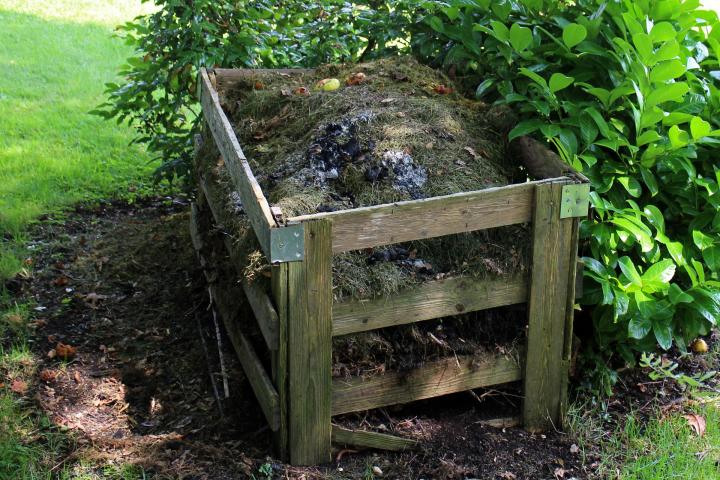
8. REDUCE, REUSE, RECYCLE
In general, caring about yourself and nature means being less wasteful. Who could argue with that? If you are a gardener, here are just a few ideas out of many:
- Buy in bulk when you know that you’ll need a lot of topsoil, mulch, compost, or other materials. This cuts down on plastic bags. Many garden centers will even deliver right to your yard. Also check with your city recycling center or Department of Transportation; they might offer free compost, soil, sand, or other materials.
- Reuse, recycle, or return old plastic pots and trays. See six ways to reuse pots and containers.
- Make your own plant pots! See how to make biodegradable plant pots.
9. GIVE GRASS A CHANCE TO THRIVE ALONE
If you’re going to grow grass, eliminate the chemical pesticides that you spread on lawns in favor of alternatives that are healthier—healthier for you, for the lawn, and for the environment.
- Start by checking the soil pH (acidity) of your lawn with a test kit available at most nursery and garden supply stores or at your state’s cooperative extension service. Soil pH affects the ability of plants to absorb nutrients. Spread limestone to raise the pH level; spread aluminum sulfate to decrease the pH level.
- Grow grass that is suitable to your needs, not just in terms of climate and soil, but also with regard to purpose. Ask your nursery to recommend seed for grass that suits your site.
- Don’t shave the lawn down to the ground; mow it to be 2.5 to 3.5 inches tall all season. Cut it to about 2 inches in autumn.
- And, if at all possible, use a hand mower, instead of an electric or gas model. You’ll appreciate the freedom from fumes and noise and perhaps sleep more soundly after walking your property.
10. LEAVE NESTING SITES FOR POLLINATORS
Many insects hibernate for the winter and need a place to bed down. New queen bees are born in the fall. After breeding, they find a place to reside for the cold season, emerging in the spring and starting the next generation.
Hole-nesting bees and beetles need things like dead tree trunks or reeds to overwinter in. Leave some natural areas of your yard instead of landscaping every inch!
WORK WITH NATURE, NOT AGAINST IT
As we hope you see, you can certainly achieve a great deal with small changes in your own “habitat.” Also, support land conservation in your community when it comes to creating community gardens and green spaces.
You’re supporting pollinators—and people!
Source / The Old Farmer’s Almanac

